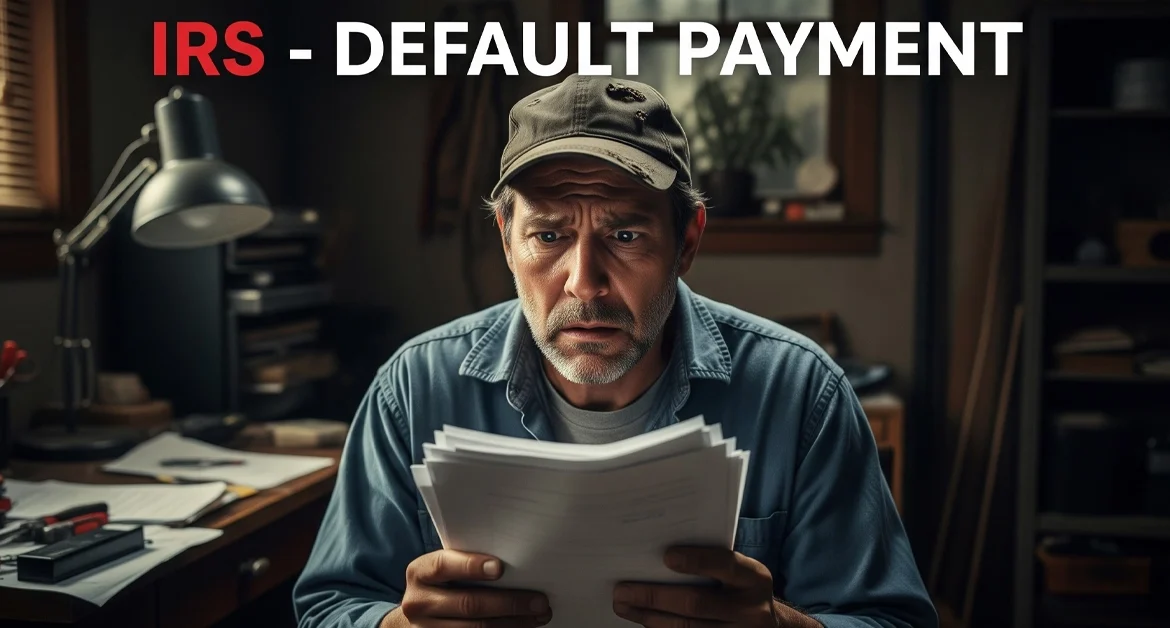An IRS payment plan, also called an installment agreement, can make tax debt manageable. But what if you miss payments or fall out of compliance?
Defaulting on a plan does not end your options, but it does carry serious consequences.
What Counts as Default on an IRS Payment Plan?
The IRS may place your plan in default for several reasons:
- Missing one or more monthly payments.
- Filing a new tax return with a balance due that is not included in your plan.
- Failing to file required returns.
- Providing incorrect financial information or not updating details when asked.
- Failing to pay taxes owed while on the plan
When a default occurs, the IRS sends Notice CP523. This letter warns that your installment agreement will be terminated unless you act quickly.
The Consequences of Defaulting
If you do not respond to the notice within 30 days, the IRS may:
Terminate the payment plan and demand full payment of the balance.
File a federal tax lien, which makes the debt public and impacts credit.
Levy wages or bank accounts.
Add penalties and interest to your balance.
These actions can create new financial stress and make it harder to resolve your tax debt.
How to Get Back on Track
Default is not the end. There are ways to fix the problem:
- Reinstate the Agreement. If you missed a single payment, you may be able to catch up and request reinstatement.
- Revise the Agreement. You can apply for a new installment plan with different terms if your finances have changed.
- Apply for a new plan. If reinstatement is not possible, submit a new application with updated financials.
- Appeal. If you believe the IRS made a mistake, you may file an appeal through the Collection Appeals Program.
Alternative Relief Options
If you cannot afford a revised plan, consider other programs:
- Offer in Compromise (OIC): Settle your balance for less than the total owed if you qualify.
- Currently Not Collectible (CNC): Pause IRS collection if you can prove hardship.
- Penalty Abatement: Reduce or remove penalties that make repayment difficult.
Preventing Future Default
To keep your plan in good standing:
- Make payments on time, every time.
- File and pay all new taxes by the due date.
- Keep accurate financial information on file.
- Contact the IRS immediately if circumstances change.
Consistency is the key to avoiding enforcement.
Reassurance and Next Steps
Many taxpayers default on a plan at some point. What matters most is how quickly you respond. By acting within the 30-day window and exploring your options, you can prevent the IRS from moving to liens or levies.
Connecting the Series
This article follows our last blog about what to do when your IRS payment plan is denied. That post explained next steps if the IRS refuses your initial request. Here, we focus on what happens if an approved plan falls apart.
Next, we will explain when the IRS files a tax lien and how you can prevent it, so you know the warning signs before one is placed on your property.
Final Thoughts: Defaulting on Your IRS Payment Plan
Defaulting on an IRS payment plan is serious, but it does not have to end your chances at relief. You have the chance to reinstate, revise, appeal, or shift to another program.
The key is to respond quickly and with complete information.
If you have received a CP523 notice, do not wait. call Tax CPA 911. We will review your case, explain your options, and help you move forward.


